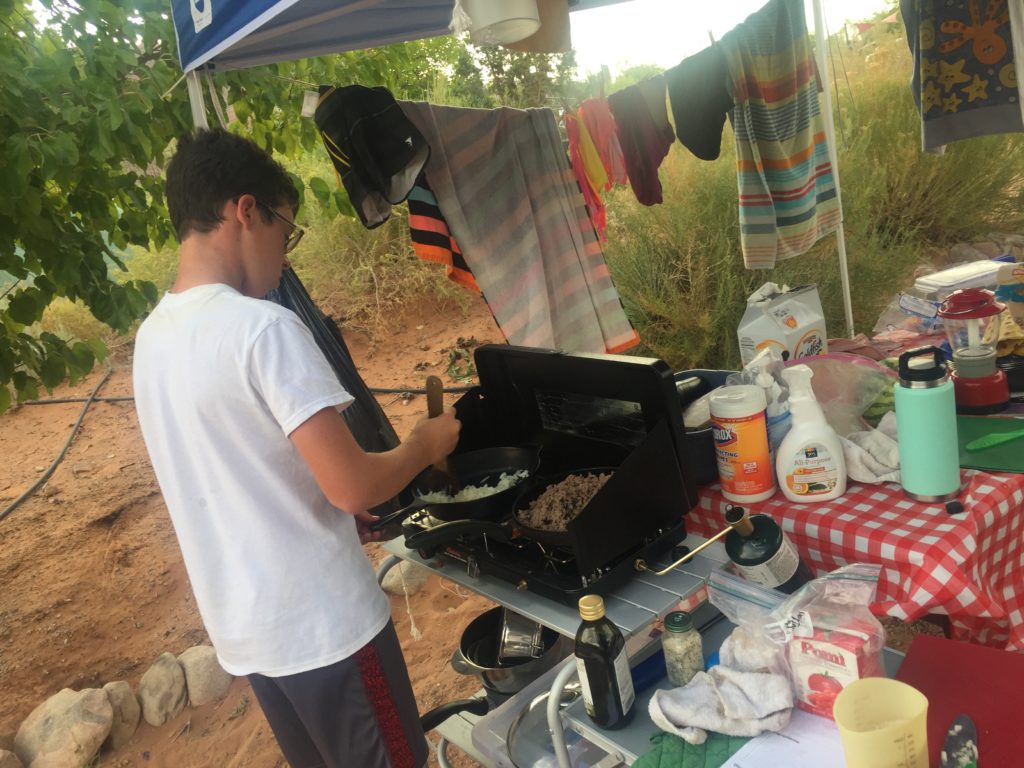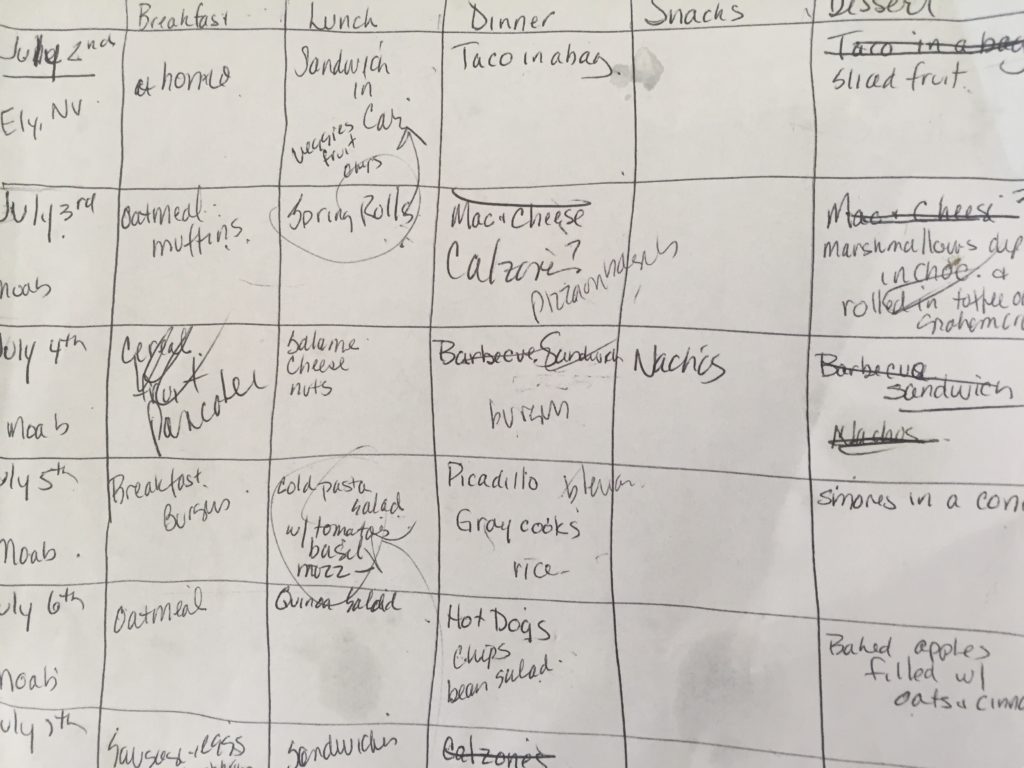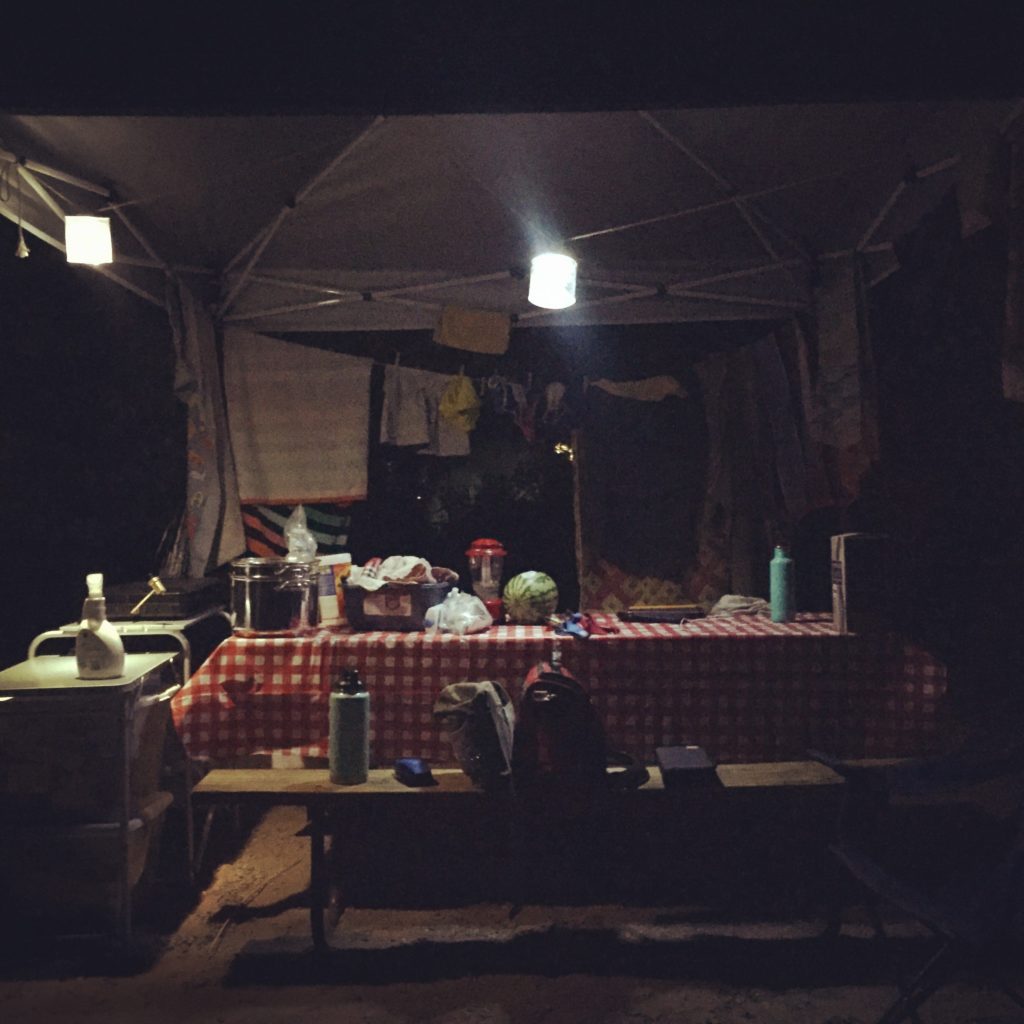We just returned from a 10-day camping trip visiting Great Basin National Park in Nevada, followed by Arches, Canyonlands, Bryce Canyon and Zion in Utah. (We also threw in one State park, Deadhorse Point State Park, for good measure.) It was an exhausting trip, filled with lots of hiking in the heat, followed by relaxing in the KOA pool upon return to the campground in the late afternoon.

Along the way we camped and prepared the majority of our food — a lunch out twice, and breakfast in Moab the morning after we were blown out of our tent and had to find a hotel.
Aside from where we were camping, and which parks we were visiting, I knew that food would be an important part of the trip planning. In fact, the kids were no different on this trip than they are at home — First thing in the morning they asked, “What’s for Dinner?”
The food we made on the road took a bit of planning, and some organization before leaving, but it proved to be an essential part of making this vacation successful.
Here are a few tips on how I made it all work out!
Make a Chart

To start, I made a chart – Mine was hand-drawn, but this could be in an excel file, which would make it easier to move meals around during the planning stage.
Included in the chart is the date/day of the week, then columns for breakfast, lunch, dinner, dessert and snacks. This is a great visualization tool so you can see if one meal provides leftover ingredients for the next; something that is essential especially when camping. You want to use up all the food you have, and not throw away anything.
Decide on the Menu
Next up is deciding on the menu. Gather some of your favorite camping meals, favorite recipes made at home, and new ones you want to try. Keep in mind that you will be making these meals on a camp stove or over a fire, after a long day of hiking, playing in the sun, etc., so your choices should definitely not be too complicated to make. Also, when deciding on which meals to make, take into account where we would be for the day. For instance, a long hike with lunch out on the trail, meant that I had to be able to serve something that wouldn’t get smashed in our day packs, so I opted for salame, crackers, nuts, dried fruits, and the like. Other days we knew we could head back to our car between hikes, we kept our lunch in the cooler – meaning sandwiches were an ideal choice. Be flexible with the menu; you may even decide on changing it up later in the planning process.
Our choices included:
Breakfast – zucchini bread, blueberry muffins, cereal, oatmeal, eggs and sausage, breakfast burgers
Lunch: sandwiches, salame, burritos with leftovers
Dinner: tacos in a bag, hot dogs, hamburgers, barbecue pork sandwich, Pasta Carbonara, Spanish Rice with Ground Beef, pizza on a bagel (a way to maintain our pizza night tradition, without the fuss of making a full pizza), barbecue chicken, and chicken burritos (leftovers).
Dessert: S’mores in a Cone (place all ingredients in a sugar cone, wrap with foil and heat over the campfire), and Camping Donuts,
Snacks (at campsite, and on the hike): mozzarella and tomatoes, chips and salsa/guacamole, raisins, carrots with white bean dip.
Create a List of Staples/Ingredients Needed
Once your camping meal matrix is complete, make a list of the ingredients needed, including staples such as spices and condiments. My goal was to purchase most of our food and take it with us, but I also realized that it would be nearly impossible to lug everything around for 10- days, worrying about keeping the cold items cold enough to keep them from spoiling. With this in mind, I planned for a time in my meal matrix when I could hit the grocery store to stock up on certain items – more milk, eggs and chicken.
Pre-Make Certain Items
There were a few things I decided to make ahead of time and freeze. I cooked the pork and shredded it, then froze it. I also baked zucchini bread and muffins to accompany fruit and yogurt at breakfast time. To further make things easier for transport, and cooking at the campsite, I reviewed the recipes and created the spice blends to be use, packing them in small containers, which were marked with the appropriate recipe.
Be Flexible

As it is at home, it is important to be flexible with mealtime. Things come up, your energy level is running low, and unforeseen incidents (like a major wind/sand storm in Moab), can cause you to make changes to your menu planning.
In the end, I think everything we prepared was welcomed positively by the family. I have to admit, I am happy to be back in my own kitchen.






